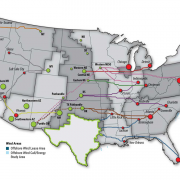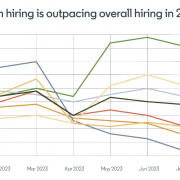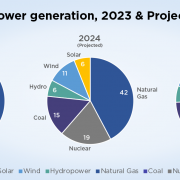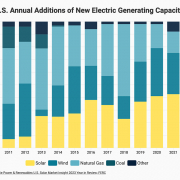Solar Job Growth Outpacing Other Industries
Meeting our climate goals while decarbonizing the power sector is forecast to create millions of clean energy jobs. The U.S. Department of Energy (DOE) expects the solar industry will need to grow from more than 330,000 employees now to between 500,000 and 1,500,000 workers by 2035 to achieve the country’s clean energy goals. According to the 2024 U.S. Energy and Employment Jobs Report, electric power generation jobs grew at double the national rate. Within that sector, solar energy had the largest and fastest growth, increasing by 5.3% from 2022-2023.
In order to meet the needed workforce as job opportunities expand, the clean energy industry will need to recruit workers who historically have been underrepresented in energy related careers. Women and minority groups are still underrepresented in the solar industry. For example, women (30%) and Black or African American (8%) in the solar workforce were much less represented than in the national workforce in 2023.
The DOE Solar Energy Technologies Office (SETO) has gathered information from industry, labor unions, training organizations, community organizations, academia, and other stakeholders regarding the biggest barriers to creating accessible solar jobs that provide competitive wages and benefits while meeting the growing demand for workers. Barriers uncovered for potential employers are a lack of workers with the relevant training and experience needed to perform higher-skilled roles. For workers, a limited awareness of solar manufacturing job opportunities, and/or a common belief that solar jobs are neither stable nor growing, contribute to hiring challenges. Not all solar related jobs require extensive training or engineering degrees; for many jobs, general on-the-job training at the site is considered sufficient.
Career Resources
Take a look at a solar career map. You will find a list of positions, and details about job qualifications plus pay scale.
Find out how the Solar Energy Technologies Office (SETO) is working to support solar workforce development.
Photo credit: Joe DelNero/National Renewable Energy Laboratory










